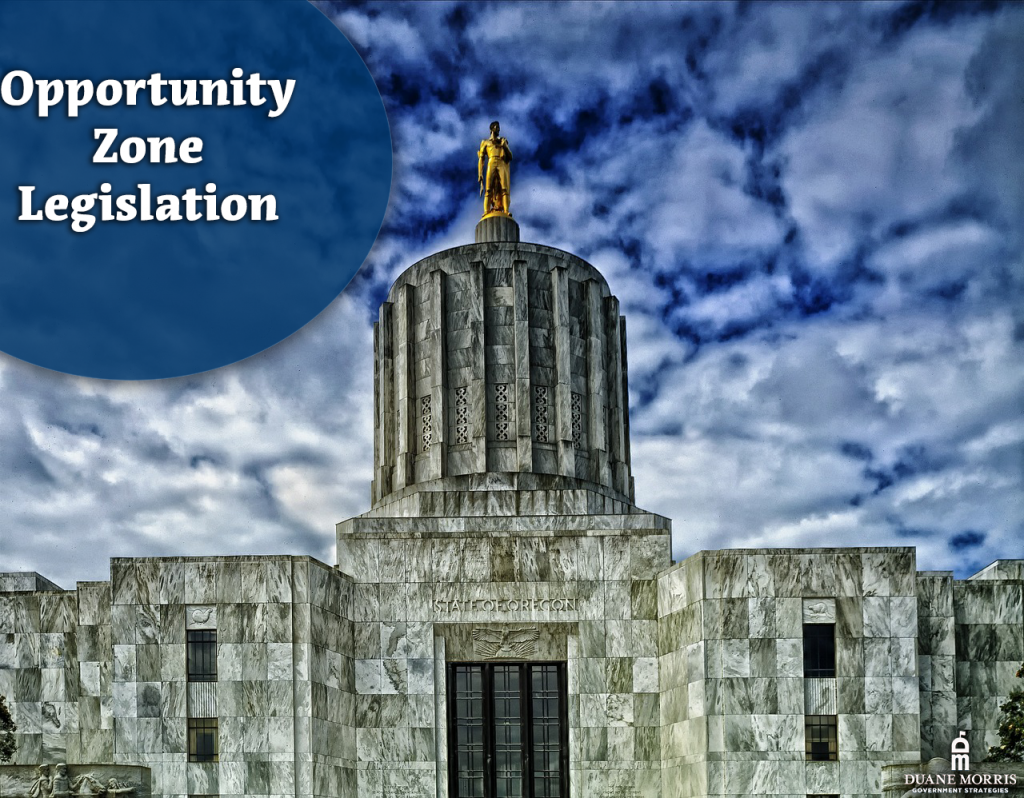Did you know there are 8,764 Opportunity Zones in the United States? Opportunity Zones are economically distressed communities. New investments in Opportunity Zones may be eligible for preferential tax treatment in certain circumstances. Since the inception of Opportunity Zones, states across the country have sought to implement their own programs or add state-level incentives to the federal opportunity zone program.
The federal Tax Cuts & Jobs Act of 2017 created Opportunity Zones as an incentive to spur public and private capital investment in underserved/distressed communities throughout the United States.
Kansas: Rural Opportunity Zone Student Loan Repayment Program
Kansas currently has 95 counties designated as “Rural Opportunity Zones,” which means living in one of those counties would come with significant benefits. One such benefit is student loan repayment assistance, which provides up to $15,000 in student loan repayment assistance over five years. Another benefit is a 100% state income tax credit.
HB 2237 was introduced in February of 2021. The bill would extend the sunset on the Rural Opportunity Zone student loan repayment program from July 1, 2021, to July 1, 2026, and also extend the sunset on the income tax credit and reporting requirements for the Secretary of Commerce from January 1, 2022, to January 1, 2027. The bill would further amend the definition of a rural opportunity zone from a list of 77 counties to any county with a population equal to or less than 40,000.
The Kansas House passed HB 2237 by a 107-16 vote, but the Kansas Senate has not yet passed the bill.
Maryland: Opportunity Zone Funding
Earlier this year we noted that Governor Larry Hogan had announced that several manufacturing and retail businesses in Maryland were slated to receive $500,000 to expand and grow in Maryland Opportunity Zones. Such zones are designated communities in the state which are eligible for federal capital gains tax incentives.
Maryland has 149 opportunity zones and the state’s OZ’s have received more than $333 million in equity investments at the time of the governor’s announcement.
New Jersey: State Assistance for Opportunity Zone Businesses
Senate Bill 496 was introduced in New Jersey’s most recent legislative session to provide state-level assistance to qualified federal opportunity zone businesses. The legislation would incorporate the federal program into New Jersey’s economic development plans and require the NJ Department of Community Affairs as the agency to administer the federal program in the State.
The bill specifically would allow a qualified opportunity business that locates within a qualified opportunity zone to be eligible to undertake a project, under the terms and conditions of a public-private partnership agreement, with a local government unit, school district, State government entity, State college or county college, or otherwise participate in a public-private partnership agreement.
Oregon: Property Investments in Opportunity Zone Legislation
In early 2021, Oregon lawmakers introduced HB 2428 related to property investments in opportunity zones. The bill would provide that the basis of an investment in opportunity zone property would be increased by the greater of zero or 50% of the difference between the fair market value of the investment on the date of sale or exchange minus the taxpayer’s basis. This would apply in such property held at least ten years. The bill would apply this to tax years beginning on or after January 1, 2020.
The bill also would require the state Legislative Revenue Officer to study the operation, benefits, impacts, and effectiveness of the federal opportunity zone program in the State of Oregon. Additionally, the legislation requires each qualified opportunity fund in Oregon to submit an annual report to the state Department of Consumer and Business Services following receipt of sums of money from investor by fund or investment by the fund in qualified opportunity zones in the State.
Pennsylvania: Tax Credits for Opportunity Zones and Prohibit Zone Hopping
At the beginning of the 2020-21 legislative session, a Pennsylvania lawmaker introduced SB 944 to expand tax credits for new jobs in Pennsylvania’s opportunity zones. Specifically, the bill would add an additional $500 per job for each qualifying job created in an Opportunity Zone on top of Pennsylvania’s previous investment and tax credits that included $1,000–$2,500 per new family-sustaining job created within Pennsylvania.
Another piece of opportunity zone legislation in Pennsylvania is HB 1377, which passed the House unanimously and is awaiting Senate consideration. The bill would change the Keystone Opportunity Zone Program because of a loophole that has allowed qualified businesses to move from an expired Keystone Opportunity Zone to a new one, resulting in a second tax break. HB 1377 would prohibit “zone hopping” to curb businesses from receiving duplicative tax breaks.
South Carolina: 2021 Opportunity Zone Enhancement Act
South Carolina lawmakers introduced H. 3130 in late 2020 to enact the “South Carolina Opportunity Zone Enhancement Act of 2021.” The bill essentially would provide additional state tax incentives beyond the federal incentives to encourage Opportunity Zone investments with the following goals:
- Help develop, redevelop, or expand small business, manufacturing, and housing;
- Stimulate investment by the private sector;
- Assist and recruit revitalization projects for small business, manufacturing, and housing; and
- Stimulate political subdivisions to participate in developing and expanding small businesses, manufacturing, and other investments, including housing.
The bill would allow a job tax credit for five years, beginning in the 2nd year after creating a job for each new full-time job created. The credit would be available to taxpayers that increase employment by ten or more full-time jobs, and the initial job credits include:
- Twenty-five thousand dollars for each new full-time job created in “Tier IV” counties;
- Twenty thousand two hundred fifty dollars for each new full-time job created in “Tier III” counties;
- Two-thousand seven hundred fifty dollars for each new full-time job created in “Tier II” counties; and
- One thousand five hundred dollars for each new full-time job created in “Tier I” counties.
Latest News
Photo credit: iStock.com/Funtap As cryptocurrency continues to shape global financial systems, U.S. states are increasingly introducing legislation to regulate its use. From allowing payments in digital currencies to banning cryptocurrency ATMs, state governments are focusing [...]
photo credit: iStock.com/designer491 According to the National Center for Education Statistics, “Property taxes contribute 30% or more of total public-school funding in 29 states.” However, using property tax income to fund public schools can be [...]
Film strip in perspective. 3D isometric film strip. Cinema Background. Template cinema festival or presentation with place for your text. Movie time and entertainment concept. Vector illustration The Georgia film tax credit was designed to [...]
Photo credit: iStock.com/TU IS New Hampshire Executive Order Background In February 2022, New Hampshire Governor Chris Sununu (R) issued Executive Order 2022-1, establishing the Governor’s Commission on Cryptocurrencies and Digital Assets. The order noted that [...]







Stay In Touch